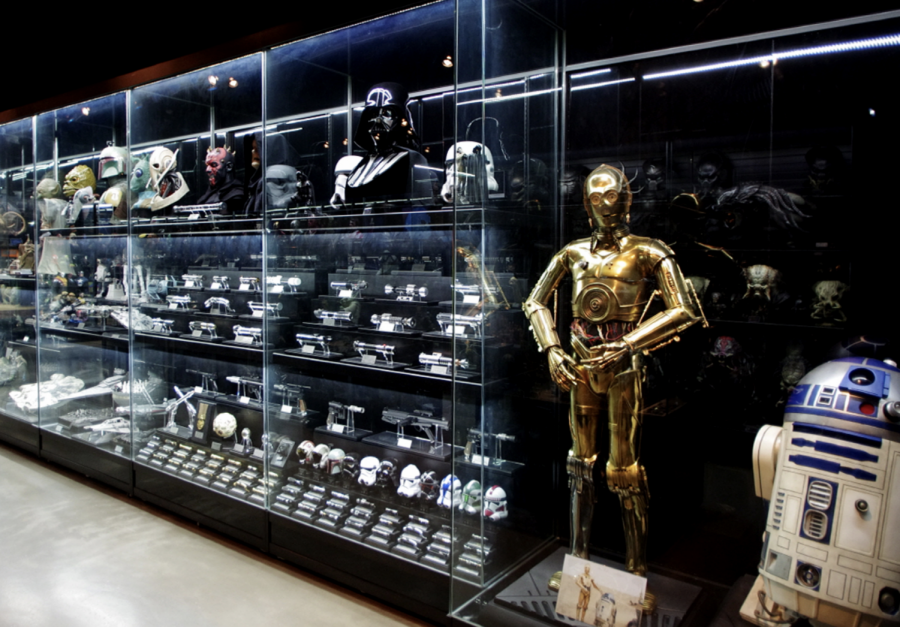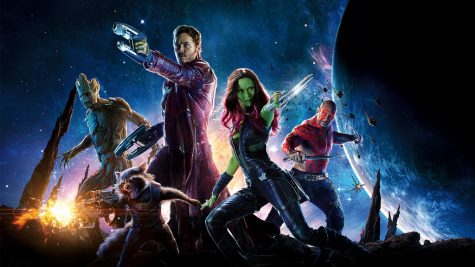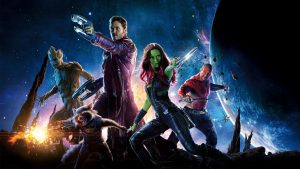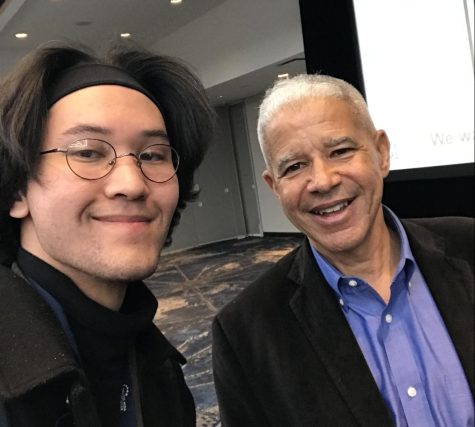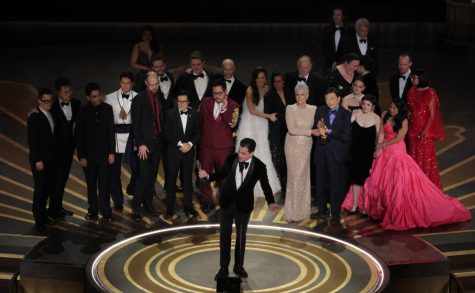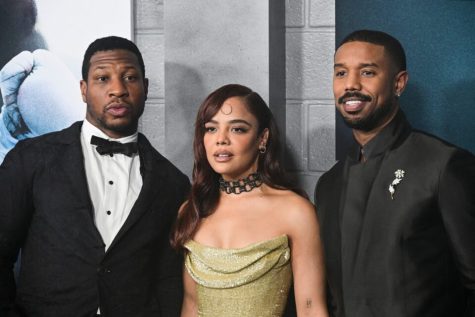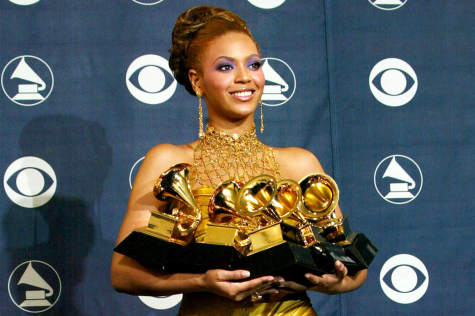Star Wars collecting: A labor of love
Photo courtesy of StarWars.com
Cho Woong’s collection.
December 7, 2017
Arturo Chavez, a senior computer science major at CSU East Bay, reflected on his memories of collecting Star Wars memorabilia. He had to stop collecting when adulthood came knocking, and said, “Time for college.”
“I couldn’t just lug [my collection] around. Also, I had to start saving money for school,” Chavez said disappointingly. “I’d go back into it [though], and I would go to conventions this time.”
When directing “Star Wars: The Force Awakens”, J.J. Abrams told Daisy Ridley that “[Star Wars] is a religion to people.” Star Wars is such a phenomenon that many take very seriously. So much so that some people feel entitled to collect myriads of items like mugs, toys, replica lightsabers, all the movies and TV shows, as much as they could get their hands on. There are various forms of expressing love for a fandom, such as collecting, which is an ongoing experience that has defined identity in many fanatics across the globe.
With only one week until the next movie, “Star Wars: The Last Jedi”, releases, collectors, fans and children are continuing to buy more Star Wars toys. This phenomenon is not a new thing, however, as veteran collector Israel Cartagena put it, “Star Wars is an ongoing machine.”
Chavez, 28, fell in love with Star Wars when he was young, but as a kid, he failed to understand the plot. Despite the complexity of the film’s story line, the intense starship battles, charm of characters like C-3PO and Han Solo and spectacular sound and picture pulled him into Star Wars.
“I was attracted to the aesthetics,” said Chavez. “I first watched the movies in Spanish, starting with ‘A New Hope.’ I read the novelization of ‘Empire Strikes Back,’ and once I saw the movie I thought the book sucked!”
Collecting may seem like a simple hobby, but there’s more to it than just having a lot of the same type of thing. Grant Kien, an expert in pop culture and professor of communication at CSU East Bay, reveals that the psychology of collecting is quite complex.
Kien sits at his office, and points at the wall to his left, “That’s a collection of lanyards and nametags. Why do I have that? Am I hoarding them? The reason I put them there is because I started putting them there when I moved into this office. So, every time I get one, I put it there, and I feel like I should throw it away,” Kien said. “In an objective perspective, it looks like I’m collecting them,” he continued.
Kien elaborated that people experience “a thrill of collecting.” When someone collects something, they have bragging rights. Collecting exists not only in Star Wars, but Kien reveals that in the 1980s, people collected CDs, and still do, along with thousands of other types of collecting. To reiterate, collecting looks the same across different fandoms, like Harry Potter, Lord of The Rings, or Lost. What makes collecting unique is defining individuality. People can present their collections to the world and shout “Hey! I love this!”
Almost every Sunday, Chavez would go to flea markets near where he lived in Central California and hunt for collectables that caught his eye.
“I went to these swap meets, flea markets, and people would be selling their junk, but that junk was Star Wars toys, including a variety of promotional items. It was always busy there, but people had good items on display,” he said. Unlike going to stores and expecting certain toys to be in stock, Chavez said that you had to be in the right place at the right time.
“My favorite item, which I found at the flea market, was an umbrella,” Chavez said. “But it was Anakin in his pod racing outfit at the end of the umbrella, his head at the end, and then when you open the umbrella, there are scenes of the pod racing in the movie. It was really weird, but I had to get it.”
Cartagena is extraordinarily passionate about his hobby and believes that Star Wars collecting is more than just buying toys. Living with a wife and four kids, he’s been collecting ever since the original Star Wars released in 1977.
“I have all the original [figures], variants, bootlegs, prototypes. My mom kept them,” he said. “I even worked at Toys R Us and I’d get deals, stuff in the clearance bins. There was a time in 1984 to 1987 when nobody wanted Star Wars, so I got deals,” Cartagena continued. “I don’t have a dollar amount on my collection, but just for the figures between 1978 to 85, it’s about $200,000.”
The Star Wars collecting community, “the genuine one,” as Cartagena explained, holds a deep chemistry between people, almost like a family. However, when there is a light side of collecting, there must also be a dark side. Cartagena explained when collectors want something, they will do anything to get it. Meaning that people will become dangerous to get what they want.
When “The Force Awakens” was announced, businesses like Target or Toys R Us participated in an event called “Force Friday.” This event would mark the release of the new, long awaited Star Wars toys. This event was a goldmine for collectors, children and fans alike. Similarly to Black Friday, Force Friday sometimes triggers unexpected behavior between people.
“I went to Target and I was first in line [for Force Friday]. Everyone wanted [Captain] Phasma,” Cartagena said. “the 3.75-inch figure,” he added. “I was able to grab it, but when I walked out with it, two people were standing outside, wanting to beat me up for it.”
Later that year, he went back to Target to look for the newer, bigger and sleeker “Black Series” figure of Captain Phasma. Another challenge Cartagena sometimes faced was dealing with scalpers.
“I wanted to look for two Phasma’s for my two boys. They had just saw Force Awakens and they liked the character. There was a guy outside asking what I was looking for. I told him about the Black Series and he told me that I wouldn’t find them anywhere,” he said. “But he did try to sell them to me for $80 apiece.”
Despite how competitive and challenging collecting can be, both Chavez and Cartagena both believe that there should be an appreciation for whatever you are collecting. “There’s a term in the Star Wars collecting community,” Cartagena said. “And if you’ve been doing it as long as I have, it is ‘be patient.’ Have patience and have fun. If you’re not having fun with it, go do something else. Sell your collection.”
As a casual collector myself, I share the thrill. Each new figure I buy becomes a piece of history and gains a little more personal value to my own collection. Collecting doesn’t have to define someone’s fandom, but it provides a stage for their voices to be heard for it. Cartagena provides one of the best pieces of advice, to any collector with any experience: “Buy what you like. You’ll go broke instead if you buy everything.”




